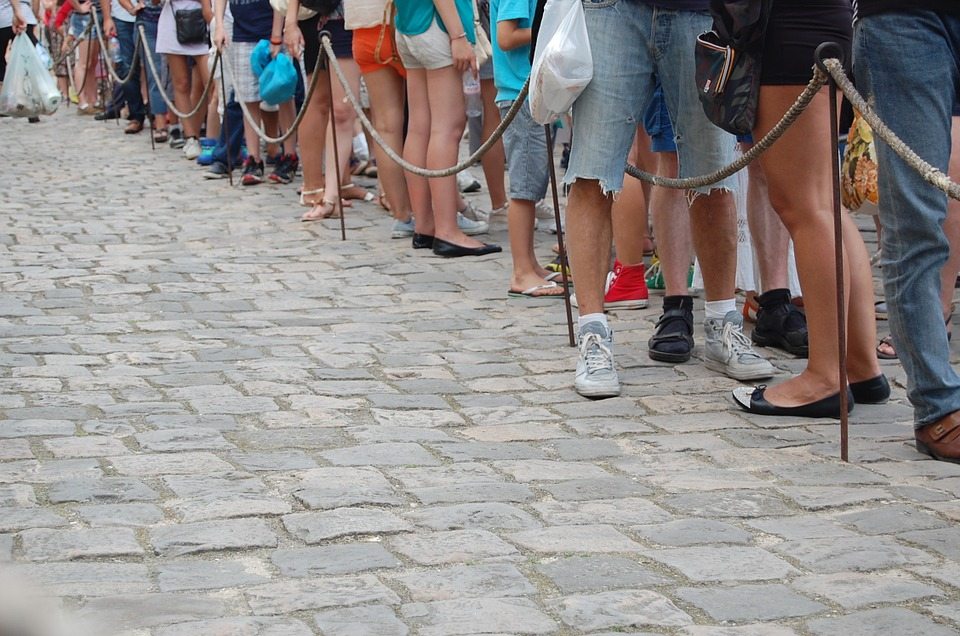During a long and fruitless wait for Supplemental Security Income (SSI) benefits, Larry Anderson, a local musician and freelance graphic artist became homeless.
Anderson said he applied unsuccessfully for SSI three separate times, hoping for monthly benefit check that would help him survive. Each time, he said he waited eight months to hear back from the Social Security Administration (SSA). Meanwhile, his financial and housing situations deteriorated. Eventually he was evicted from the apartment on Shannon Place in Southeast DC where he had lived from 1991 to 2009.
Since then, Anderson has been in and out of shelters and friends’ houses. Last winter, he sometimes resorted to staying in his office in Falls Church, Va.
His story is not unique. According to a new report by the National Law Center on Homelessness and Poverty (NLCHP) hearings for such benefits currently take one to three years.
“In the meantime, in most states applicants have no source of income, often exacerbating their underlying physical and mental health conditions, and resulting in homelessness,’’ noted the report.
But the benefits, which include a monthly check and public health care coverage, are not simple to obtain. Less than a quarter of all SSI applications and less than half of all applications for Social Security Disability Insurance are accepted, according to the National Law Center on Homelessness and Poverty. SSI pays benefits based upon financial need and SSDI pays benefits based upon prior work history and social security earnings.
Anderson says he applied for disability benefits because of his damaged knees and back. When he went for his physician checkup for a recommendation, he learned that he was developing problems with his shoulders and wrists. Each time that he applied for supplemental
insurance, he got a letter back saying that his condition was not keeping him from doing his job.
Anderson challenged the SSA’s judgement, asking, “If I can’t get out of bed, how can I get to the office?” But his appeal went nowhere.
It may be of little comfort to Anderson, but at least he got in to see a doctor. According to the NLCHP report access to physicians and psychiatrists who can examine SSI and SSDI applicants and sign off on their applications poses a significant barrier to obtaining the benefits. Many applicants are poor and many lack insurance. Some live in areas that are underserved by health providers. And many of those who do get into medical offices or clinics for the needed exams are seen by nurse practitioners, physicians’ assistants and licensed clinical social workers. These auxiliaries are not currently considered qualified to provide diagnostic and other clinical information required for SSI and SSDI claims.
NLCHP advocates broadening the list of health care providers able to provide the required information for people applying for SSI and SSDI benefits.
“By expanding the types of practitioners permitted to provide definitive diagnostic evidence of certain conditions, the federal government can uphold its existing commitments to end homelessness and to promote access to healthcare,” the report found.
Even successful applicants may face a struggle to get by. The monthly SSI benefit of $698 does not cover the cost of a modest apartment in the Washington region. While benefits have been raised over the years, they have not kept up with the cost of housing in this area.
Wilbert Meadows had his SSI claim for severe depression accepted. However, he was in a rehabilitation program at the time to overcome his prescription medications. He did not receive the necessary paperwork, and his case was closed. But Meadows didn’t consider losing the case
much of a loss. He knew the SSI couldn’t pay for his housing, so he looked for other ways to get his life back together. Right now, Meadows is taking computer classes so that he can get a good job and get out of the shelters.
“By next year I should have my own place,” Meadows said.
The overarching problem is related to the lack of affordable housing in the area. According to the D.C. Fiscal Policy Institute, half of the low-cost rental units in the District have disappeared in the past decade. The 70,600 units that were available 10 years ago have declined to 34,500.
Some nonprofits are trying to tackle the problem by developing low cost units and making them available to elderly, disabled and vulnerable people. SOME or So Others Might Eat has 550 units in 14 housing developments and charges rent on a sliding scale based on 30 percent of their residents’ incomes, in accordance with affordable housing guidelines set up by the US Department of Housing and Urban Development.
“There’s always much more demand for housing than what we actually have,” said Troy Swanda, the housing development director at SOME. There are so many people trying to get into those units that the organization has to put a cap on how long the waiting lists can be. SOME does not want people to get their hopes up about being able to live in one of the units when the lists get too long.
Anderson said that SSI could not pay for his whole rent, but the benefit might help him find a more secure living situation. He is still frustrated that he tried three times, only to fail to get SSI and end up homeless. “That bit of money could have saved my apartment at that time,” he said. “Without that, I was dead in the water.”








